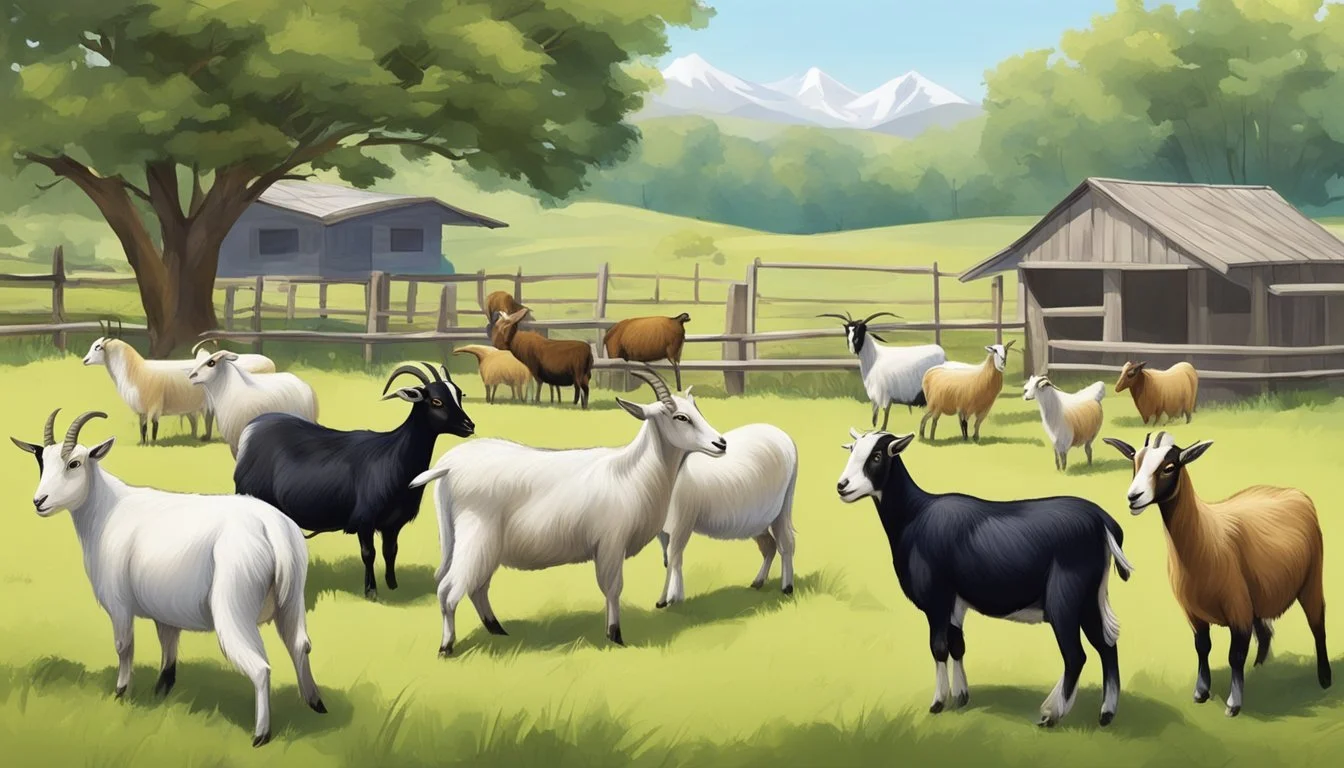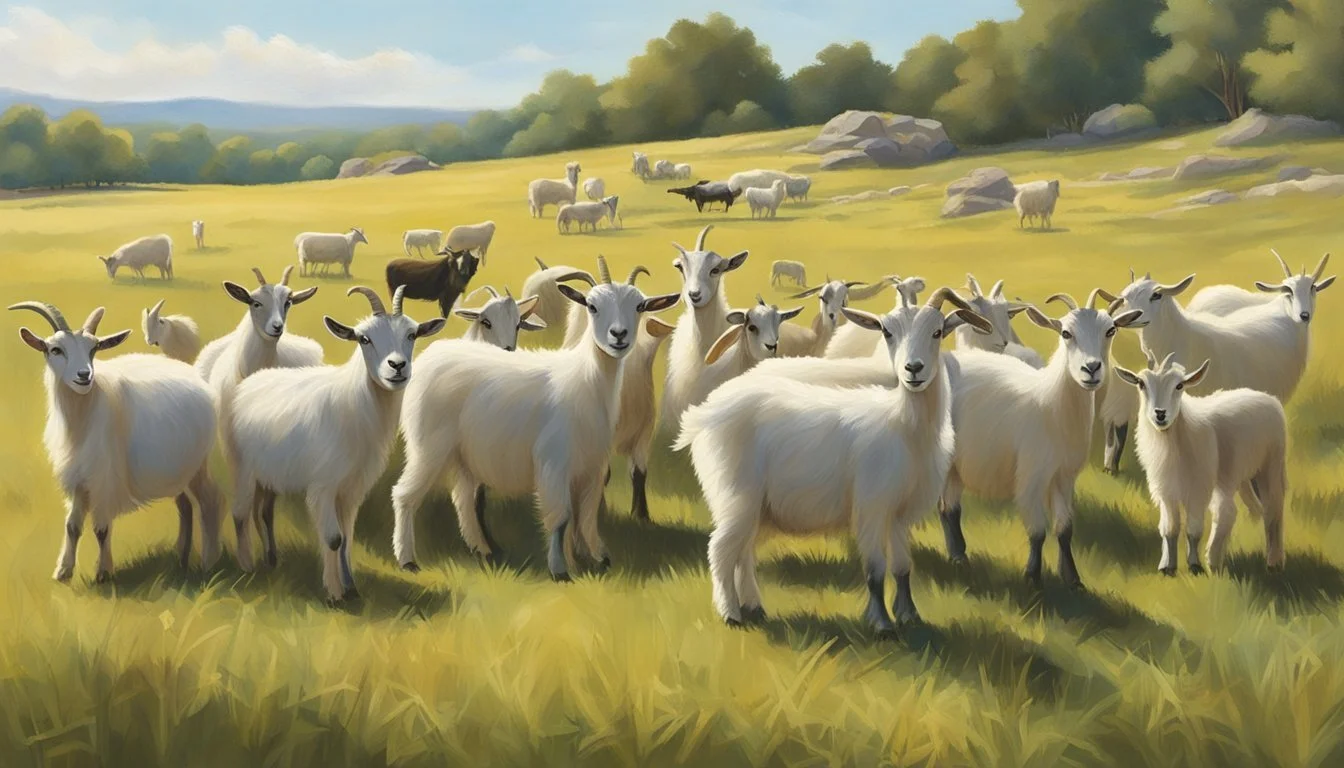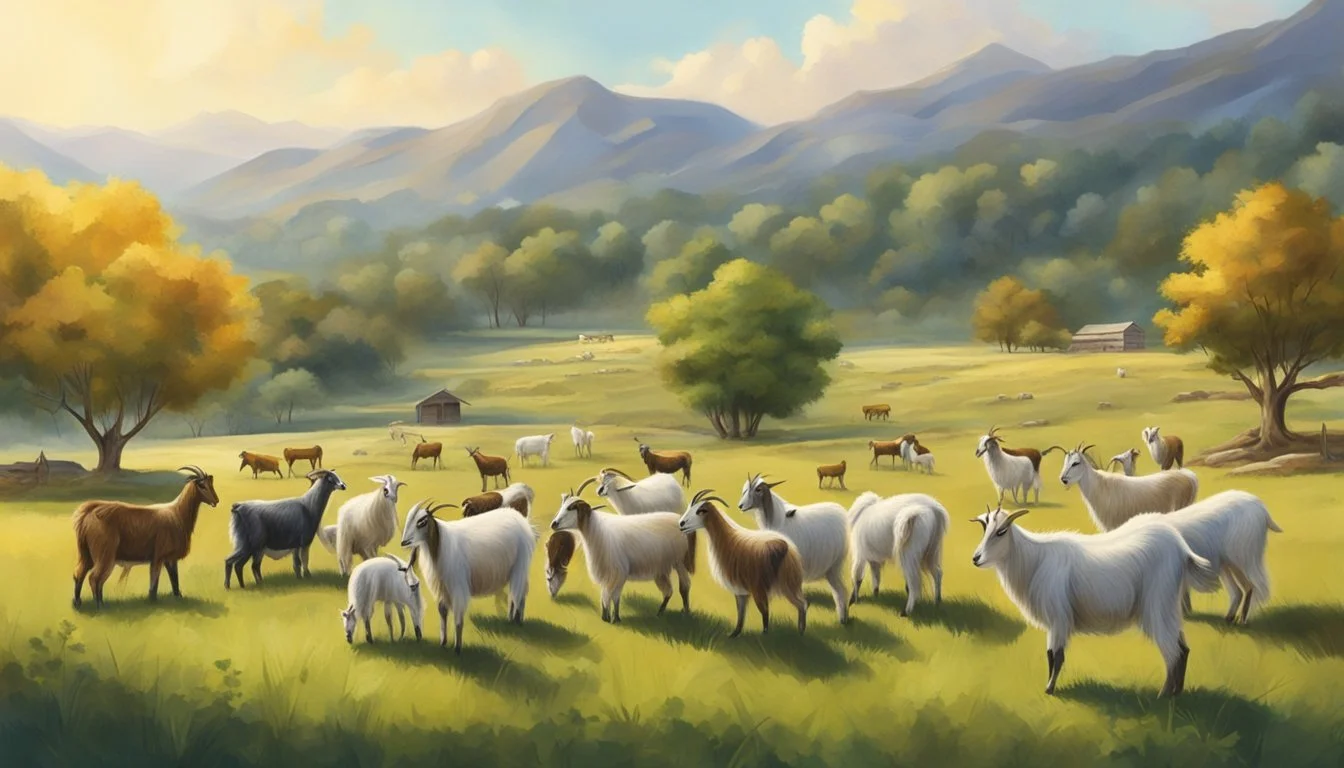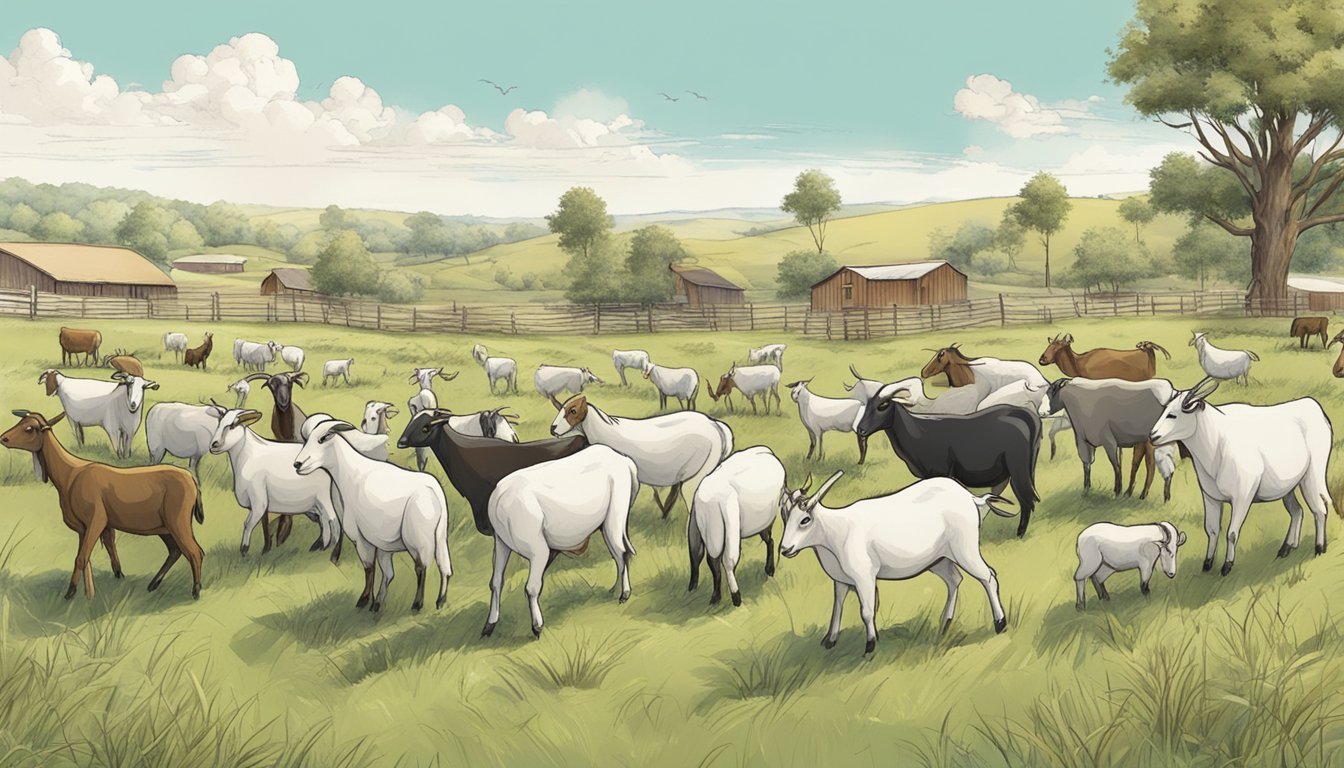What Are the Best Practices for Managing a Mixed-Age Goat Herd
Key Strategies for Success
Managing a mixed-age goat herd presents unique challenges and opportunities compared to managing a herd of similar age groups. Effective management practices are essential for maintaining herd health, maximizing productivity, and ensuring the animals' well-being. It is crucial to consider the diverse nutritional needs, health care requirements, and social dynamics that a mixed-age herd presents. By aligning with best practices that cater to each age group within the herd, farmers can create an environment that supports the growth and productivity of all goats involved.
One of the key strategies for managing a mixed-age herd is the implementation of tailored health programs. Younger goats often require more frequent vaccinations and deworming schedules compared to their older counterparts, while senior goats may need additional attention for chronic health issues. Collaborating closely with a veterinarian to develop a comprehensive health plan that addresses the needs of each age bracket can vastly improve herd resilience to disease. Additionally, utilizing rotational grazing can minimize parasite load, which is particularly beneficial for younger goats that are more susceptible to internal parasites.
Another important component of mixed-age herd management is adapting feeding protocols to meet the varying nutritional needs. Proper diet formulation ensures that all goats receive the nutrients essential for their particular life stage, from fast-growing kids to lactating does and aging adults. Recognizing and accommodating these needs helps to optimize the meat and milk production of the herd. Furthermore, establishing a well-planned breeding schedule helps to maintain a structured mixed-age population, enabling better management and care for each generation of goats.
Understanding Goat Herd Dynamics
Managing a mixed-age goat herd requires an understanding of the complex social structures within the group. Recognizing generational differences and establishing clear leadership are pivotal for maintaining a harmonious and productive environment.
Acknowledging Generational Differences
In a mixed-age goat herd, generational differences can substantially affect herd dynamics. The varying physical capabilities, social roles, and behavioral tendencies of different age groups necessitate customized management strategies. For example, older goats may hold higher positions within the herd's hierarchy, while younger members may be more active and inquisitive. Acknowledging these differences helps in creating a balanced environment where each goat can thrive according to its age-related needs.
Importance of Leadership in Mixed-Age Herds
Strong leadership is crucial for managing a multigenerational team of goats. The herd typically looks to an experienced, dominant goat for cues, often an older buck or doe that commands respect. This leader maintains order and orchestrates teamwork, ensuring that all members of the diverse group, from the sprightly kids to the elder advisors, contribute effectively to the herd's overall well-being. Consistent, fair treatment and understanding the social structure allow a human manager to work with the inherent leadership within the herd for optimal outcomes.
Establishing Effective Communication
Effective communication within a mixed-age goat herd management team ensures that all members, regardless of age or experience, understand their roles and contributions. This creates a cohesive environment conducive to the well-being of the herd.
Aligning Communication Styles
When managing a multigenerational workforce, it's critical to recognize and adapt to different communication styles. Younger team members may prefer digital means such as messaging apps, whereas older members might favor face-to-face conversations or phone calls. To align these preferences:
Utilize multiple platforms for communication, ensuring each team member can choose their preferred method.
Conduct regular training sessions to familiarize the team with all available communication tools, fostering proficiency across generations.
Promoting Inclusive Decision-Making
Inclusion is integral to the decision-making process in any team, and it's especially important in a varied-age environment where diverse perspectives enrich outcomes.
To promote inclusive decision-making:
Establish regular meetings where all members have the opportunity to voice their opinions.
Clearly define the decision-making process, ensuring that contributions from all age groups are considered and respected.
By implementing these strategies, a goat herd management team can optimize their communication and decision-making for better harmony and productivity.
Creating a Culture of Inclusion and Respect
In managing a mixed-age goat herd, it's crucial to foster an environment where each animal feels safe and valued, regardless of age. Strategies to address unconscious age bias and to promote psychological safety are fundamental in achieving a harmonious and productive herd dynamic.
Addressing Unconscious Bias and Stereotypes
Unconscious bias can lead to ageism, adversely affecting how goats of different ages are treated within the herd. It’s essential for the herd manager to recognize and mitigate these biases. One practice is consistent observation of the herd's social dynamics to ensure that younger or older goats are not unfairly segregated or denied access to resources.
Another aspect involves mixed-age grazing, which prevents age-based stereotypes within the herd by allowing goats of various ages to interact and graze together. This encourages social integration and helps break down barriers derived from age bias.
Encouraging Psychological Safety
Psychological safety is the bedrock for a respectful and cohesive goat herd, where each goat's value is recognized irrespective of their age. Creating safe spaces where goats can retreat and feel secure is vital, especially for the older or more vulnerable members.
Structured interactions, such as regular feeding schedules and monitored playtime, help reinforce a sense of security and community. Furthermore, ensuring that shelter and rest areas are accessible for all ages supports an inclusive environment where every goat can thrive.
By consciously promoting these practices, a herd manager not only upholds a culture of respect and value for each individual goat but also paves the way for healthy herd dynamics conducive to the well-being of all.
Fostering Productivity and Collaboration
Managing a mixed-age goat herd requires a strategic approach to maximize productivity and enhance collaboration within the team. Attention to each animal's needs and leveraging the multigenerational dynamic are essential.
Balancing Team Roles and Responsibilities
It is crucial to assign roles based on an individual's strengths and the needs of the goat herd. The older goats bring experience and can lead the herd effectively, setting the pace and direction. They can be tasked with leading during grazing and mentoring younger members. Meanwhile, younger goats often display high energy levels that could be channelized towards exploration and play, which are beneficial for their development and can indirectly stimulate the older goats to remain active.
Experience: Assign leadership roles to older goats during grazing.
New Skills: Incorporate training sessions for younger goats to navigate the terrain.
Encouraging Knowledge Transfer and Mentoring
Fostering an environment where older goats can mentor younger ones enhances knowledge transfer and builds a collaborative spirit. The more experienced goats can teach the younger goats about foraging practices and predator awareness, essential for survival. This mentorship ensures that valuable survival skills are preserved and passed down, facilitating smooth herd management.
Collaboration: Pair older goats with younger ones for mentoring opportunities.
Productivity: Track the progress of skills transfer to younger goats, ensuring a well-rounded herd.
By implementing these best practices, a goat herd manager can create a system where each goat, regardless of age, plays a pivotal role in the herd's collective success.
Professional Development for All Ages
In a well-managed mixed-age goat herd, it's essential to recognize that professional development opportunities should cater to the varied experience levels and career stages of the handlers and farm managers. Customized career pathways and training programs are critical to ensuring that each member can grow and excel in their role, leveraging their unique strengths.
Customizing Career Pathways
For those working with mixed-age goat herds, designing custom career pathways is critical. It involves aligning individual goals with farm operations so that each person's career trajectory is both fulfilling and enhances the herd's productivity. For newer handlers, pathways may focus on foundational goat husbandry techniques, while more experienced personnel might be steered towards specialization in areas such as veterinary care or breeding strategies. Allowing each team member to map out a development plan that resonates with their aspirations and the needs of the herd ensures motivation and retention.
Entry-Level Handlers: Focus on essential goat care and management.
Mid-Level Managers: Specialize in areas according to the farm's needs and individual interests.
Senior Staff: Take on mentorship and strategic planning roles within the farm.
Maximizing Training and Upskilling Benefits
Training and upskilling present tangible benefits for employees at all levels. Efforts to continuously improve through education and acquisition of new skills benefit the individual and the herd by enhancing overall efficiency and wellbeing. Effective programs might include:
On-site Workshops: Practical and hands-on teaching of advanced husbandry and management techniques, tailored to different experience levels.
Online Courses: Accessible education on the latest goat care advances for continuous learning.
The key to this development lies in ensuring that each individual knows the opportunities available to them and feels empowered to take part. Whether a newcomer looking to establish themselves in the field or an experienced manager aiming to refine their expertise, professional development is a cornerstone of a thriving and sustainable mixed-age goat operation.
Managing Resources and Workloads
Effective management of a mixed-age goat herd requires a thoughtful balance of resources and workloads tailored to individual needs and life stages. The approach should consider the distinct preferences and habits goats exhibit as they mature.
Aligning Work with Life Stages
When managing a mixed-age goat herd, it's essential to align workload with the life stage of each goat. Younger goats have different nutritional and space requirements compared to mature goats. For instance:
Kids and Young Goats: Require highly nutritious feed for growth and designated areas where they can play and explore without the risk of injury from older goats.
Adult Goats: Need space to roam and exercise to maintain health, as well as appropriate workload in terms of breeding or milking to optimize their productivity.
Senior Goats: Should have easy access to food and water, and a workload that reflects their decreased energy levels and potential health issues.
Understanding Unique Preferences and Habits
Each goat comes with its own set of unique preferences and habits, which are crucial to consider to maintain a harmonious and productive herd. Some may prefer solitude while grazing, while others may thrive in a social setting. Observing individual behaviors and adjusting management strategies accordingly will ensure a happy and healthy herd. Factors to consider include:
Feeding Habits: Position feeders and water troughs to accommodate goats that may be dominant or shy, ensuring all have access without conflict.
Resting Areas: Offer a variety of resting spots that cater to different preferences, such as quiet corners for less social goats or communal areas for others.
Shelter: Provide shelter options that reflect the temperature preferences and needs across different age groups, ensuring protection from extreme weather for all.
By considering the individual needs and behaviors of goats at various life stages and integrating these observations into workload and resource planning, herd managers can promote a well-balanced environment that values the health and welfare of each goat.
Implementing Equitable Practices
In managing a mixed-age goat herd, ensuring equity across the board empowers the herd's overall welfare and productivity. Adequate and fair compensation, along with recognizing every goat's individual contributions, sets up a harmonious and effective farming environment.
Fair Compensation and Benefits
Compensation is vital for maintaining a healthy herd, reflecting the value and effort of each goat irrespective of age. It is important that older goats receive nutritious feed that caters to their age-specific needs and that younger, more active goats have access to ample forage and supplements to support their growth and development. In terms of benefits, providing resources such as adequate shelter, veterinary care, and secure fencing equips each goat with the necessary support to lead a healthy life.
Acknowledging Contributions and Initiatives
Respect and recognition of the contributions to the herd's wellbeing create a positive employee experience. When a goat demonstrates initiative—such as leading the herd to new grazing areas or being quick to adapt to new management practices—acknowledging this behavior encourages others within the herd. This can be through public recognition during herd assessments or offering extra treats and comforts. Such acts demonstrate to the herd that their individual value is seen and appreciated.







